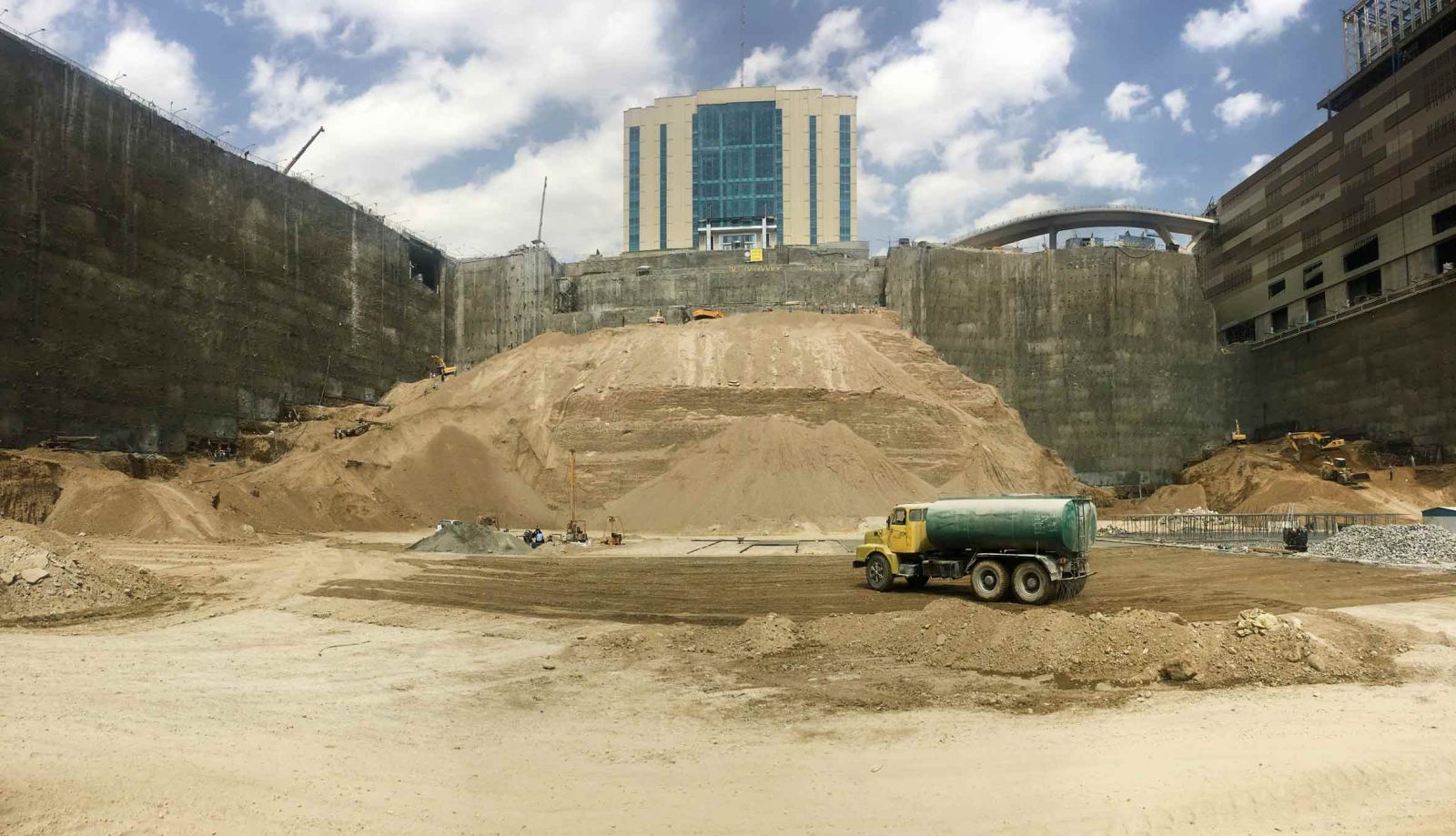Earthquakes, floods and air pollution are not the only threats lurking in Tehran. Over the past few years, land subsidence has been added to the list. In the past four months, seven instances of land subsidence have been reported in different parts of the capital, a consequence of the deep excavations at construction work sites, and eight people have been killed.
The latest mishap occurred at Molavi Crossroad early Saturday, October 15, and was reported by residents to the Firefighting Organization. Fortunately, there were no casualties and the huge pit was filled up immediately. Five days earlier another land subsidence occurred in Qiyam Street (District 12) which killed an Afghan worker and an Iranian firefighter, ILNA reported.
Other similar instances have been reported in the southern Kianshahr district (District 15), western Shahran (District 5), Payambar Street (District 5), Enqelab Street (District 12), and East Shoush Street (District 15) in the past four months.
The increasing number of deep excavations across the city for construction of skyscrapers, megamalls and subway expansion has been cited by the people and urban planners as the main reason for the problem of land subsidence.
“Deep excavations in particular in the northern parts of the capital where there are too many ‘qanats’ or aqueducts (man-made channel constructed to send water from one location to another) can pose a big risk to the entire city,” said Pirouz Hanachi, secretary of the Council of Architecture and Urban Development, and deputy minister of roads and urban development.
“The excavations can redirect aquifers and this can cause the soil underneath to be washed away and subsequently lead to land subsidence,” he said.
Land subsidence is the sudden sinking of the Earth’s surface owing to subsurface movement of earth materials. It occurs when large amounts of groundwater have been withdrawn by excavating certain types of rocks, such as fine-grained sediments. The rock compacts because the water is partly responsible for holding the ground up. When the water is withdrawn, the rocks cave in.
Harm to Underground Soil Texture
There are over 500 networks of old ‘qanats’ or aqueducts in the capital stretching more than hundreds of kilometers. Some of them are at a depth of over 130 meters while others are hardly three meters deep.
“In all cities across the world, excavations deeper than 25 meters are considered dangerous. Currently, there are several pits deeper than 40-70 meters in Tehran; so we cannot say they haven’t caused any harm to the underground soil texture,” Hanachi added.
“Tehran Municipality (TM) should restrict its practice of selling permits for construction of high-rise buildings and the megamalls.” The architect was echoing the protestations of many Tehran residents calling on the TM and the government to revise its urban policies that have resulted in monstrous steel and cement structures popping up across the northern flank of the overcrowded megalopolis in the past two decades.
Recently, a 40-meter excavation has been made for construction of a shopping mall near Tehran’s Sahebgharaniye Palace in Niavaran Palace Complex -- an unwise decision and the TM, which has granted the permit, is responsible. The historical building now faces grave risk in the event of land subsidence.
Subway Development Projects
Land subsidence has occurred frequently in the vicinity of metro project sites. Earlier, Mahdi Chamran, head of Tehran City Council (TCC) had said that, “while the depth of metro tunnels in Tehran should be restricted because of the special soil condition, it seems that the metro projects are being implemented without enough attention to critical technical detail.”
Esmael Najjar, head of the Crisis Management Organization, also said that the tracks of several subways in the capital pass through soft clay. “Such kind of clay has properties like large void ratio, high water content, poor permeability, high compressibility, and low shearing strength and increase the likelihood of land subsidence.”


